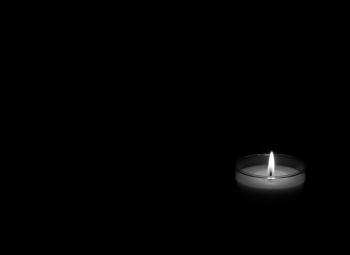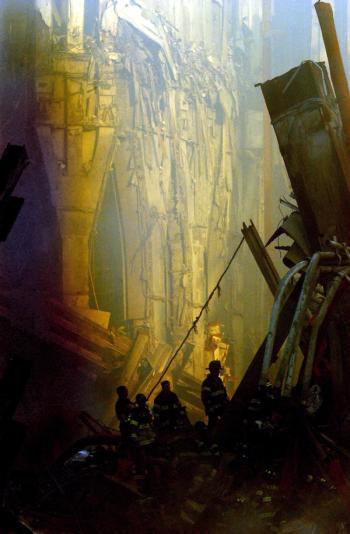
- Psychiatric Times Vol 20 No 8
- Volume 20
- Issue 8
Commentary: Breaking Faith: Bowling for Columbine
When it was announced that Michael Moore's documentary on the U.S. culture of fear and gun violence, Bowling for Columbine, had won the Academy Award for feature documentary, the Hollywood audience gave him a standing ovation.
When it was announced that Michael Moore's documentary on the U.S. culture of fear and gun violence, Bowling for Columbine, had won the Academy Award for feature documentary, the Hollywood audience gave him a standing ovation. Moore had invited the other nominees to join him on the podium, and they all did. He emphasized their collective dedication to nonfiction and derided the fictional reasons for the war on Iraq and the fictions of orange alerts and duct tape. He then brazenly scolded the president, saying, "Shame on you, Mr. Bush. Shame on you." At that point the orchestra began to play, and one could hear boos that Moore would later claim came from the balcony and the stagehands. After the commercial break that followed, host Steve Martin was ready with a wisecrack, "It was so sweet backstage, the Teamsters are helping Michael Moore into the trunk of his limo."
Actually, Moore was holding forth at a press conference and enjoying his moment of glory. Not only had he come up with the Oscar, he had stolen the headlines. He was unapologetic about injecting war and politics into the Academy Awards. Although the next morning he was compared in the mainstream media to Vanessa Redgrave and her 1978 pro-Palestinian Liberation Army speech, backstage Moore had said he had no concerns about a Hollywood backlash. He had insisted that most of the audience, like the majority of Americans, were with him and against "Bush's war."
What none of the press asked Moore about were his own fictions: the ways in which he had doctored "truth" in Bowling for Columbine. Even those who agree with Moore's antiwar, anti-Bush politics might have been thinking, Shame on you, Mr. Moore, not for what he said on Oscar night, but for how he deceived and manipulated in making the documentary that won. That this was an important matter could not have escaped the journalists. Serious concerns had been raised about Bowling for Columbine months before in the mainstream press. On Oct. 11, 2002, in a New York Times review, A. O. Scott had dismissed some of Moore's claims as too preposterous to deserve discussion. For example, in reciting a litany of U.S. sins in foreign policy and covert actions that led to violence, Moore shows the first airliner crashing into one of the World Trade Center towers and asserts that Osama Bin Laden--using his CIA training--killed 3,000 people on Sept. 11, 2001. Many people accept as fact that at some point in time the CIA became involved with Bin Laden. It is Moore's next steps, suggesting that the CIA trained Bin Laden as a terrorist and that he used that training to mastermind the destruction that provoked the New York Times critic. I shall have more to say below about these extra steps and how they fit into Moore's underlying thesis in Bowling for Columbine.
Moore is clever enough to know when someone is making a fool of himself, and he gives them enough rope--time on camera--to hang themselves. If that doesn't work, he is not above getting the result he wants by creative editing that outrages his critics. It has to be said that no documentary is completely objective. Even when the camera is allowed to tell the story, the edited footage reflects the filmmaker's subjectivity. Think of Frederick Wiseman's prize-winning documentaries, which, in their own mind-numbing way, advocate a point of view.
But Moore's project is different from the traditional documentarian, and it's not just that he is a left-wing political advocate. He presents his films as feature-length entertainments. Moore accused critics of his first documentary, Roger and Me, of having no sense of humor and of evaluating his movie as if it were an academic exercise. Pauline Kael called him a "big shambling joker, who uses people as stooges and breaks faith with his audience." Vincent Canby, writing in the New York Times, agreed that Moore "makes no attempt to be fair," and suggested playing fair is for college football. Kael and Canby could have been discussing Bowling for Columbine.
Given the subject matter of Bowling for Columbine, I doubt that many people in the industry would have expected it to make money. Hollywood knows that there is an insatiable audience for violent films, but what could a documentary about violence say that would be either new or interesting? Moore could have followed the standard hypocritical formula of the antipornography documentary featuring lots of sex and nudity while deploring it. Moore, however, has not filled this film with scenes of gory violence. And he has, in my opinion, wisely stayed away from offering audiences "scientific explanations" of violence. Moore also wanted to address that terrible day of April 20, 1999, when two teen-agers with high-powered weapons killed 12 classmates, a teacher and themselves at Columbine High School in Littleton, Colo. Columbine is an upscale, predominantly white high school outside Denver, not an inner-city ghetto.
It is to Moore's credit that he avoided the academic talking heads who would have held forth on the demonic Y chromosome, the amygdala or serotonin levels in the brain. Moore is the schlep star, and his agenda is political, not scientific. Moore proceeds by a kind of lateral rather than linear thinking. He puts together a series of interviews that link his hometown and Roger and Me location of Flint, Mich., and Littleton, Colo. Much of Moore's skill as a moviemaker consists of manipulating people so that they reveal themselves in cinematic moments that are the equivalent of found art. He is the Marcel Duchamp of documentarians. Where it is possible to believe that--with the famous urinal as sculpture--Duchamp was laughing at his audience, Moore seems to be mocking or at least exploiting the people whom he films.
One of his more amusing scenes is when he finds a Michigan bank that will give a gun to anyone who opens an account. Moore turns up at the bank and is shown getting a rifle in short order. As he walks out, he holds up the gun and asks, "Do you think it's a little dangerous to be giving out guns in a bank?" The absurdity of it makes the bank look pretty stupid, and the audience laughs. But according to bank officials, they do not ordinarily hand over guns to their customers. Moore's people arranged this exchange well in advance. The required paperwork and waiting time for gun ownership was done long before the scene was shot and, as a favor to Moore, the rifle had been delivered to the bank so Moore could pick it up there rather than going to the gun dealer, as is ordinarily required. There is, indeed, a bank in Michigan that rewards those opening a long-term CD account with a gift certificate for a rifle instead of a toaster. That certainly says something about how Michiganders feel about guns. Nothing else in this scene, according to the bank official, has anything to do with reality.
There are other intriguing aspects of Michigan's gun culture that Moore presents. His blue collar appearance and manner get him interviews with members of the right-wing Michigan militia who look and talk like wacky refugees from the Jerry Springer Show as they insist on their constitutional right to bear arms. Even more extraordinary is Moore's interview with James Nichols, the brother of Terry Nichols who was convicted for helping Timothy McVeigh in the Oklahoma City bombing. I felt that Moore was on a fishing expedition when he went to visit Nichols on his Michigan farm where his brother and McVeigh had practiced making small bombs. In the course of the filmed interview, during which James Nichols appeared tightly controlled, it looked to me as though he were repeating answers he must have given many times before. Moore somehow gets through to the weirdness behind the mask of reason. A strange smile comes over Nichols' face as he acknowledges that he sleeps with a loaded pistol under his pillow. Moore seems to bait him, asking: "Will you show us the gun?" Nichols agrees, but not on camera. He takes Moore into his bedroom and there, with the door ajar, we hear him proving to Moore that the gun is loaded by cocking it and putting it to his own head. Moore begs him to desist but certainly this weird moment is found art that only Moore could have created.
Michiganders obviously love their guns and some of them seem close to clinical paranoia. But the critical Michigan event in Moore's pastiche deals with the school near Flint, Mich., where a 6-year-old child shot a first grade classmate--the youngest such killing on record. This chilling event is the basis for Moore's confrontation with Charlton Heston.
Moore introduces the subject by interviewing the principal of the school. As she relates the story for Moore, she suddenly loses her composure and turns away from the camera in tears. This is another moment of found art, and Moore uses it. Nothing else she may have told Moore appears in the documentary. The grade school killing was front-page news all over the country. In the mass media, the killing was about a boy in first grade who was a bully and difficult to control in school. His teen-age mother had earlier been charged with child abuse but had not been convicted. She sent her children to live in a crackhouse where drugs were traded for guns. That is the story of race, poverty and violence with which Americans have become familiar. In Moore's documentary, the little boy's mother is a victim of Michigan's Welfare to Work program. She is forced to work two jobs at low wages a long bus ride away. She is being evicted from her home despite her efforts because she does not make enough money, and she sends the child to live with an uncle where--given U.S. gun culture--the boy finds the loaded pistol. Moore will go all the way to California to shame Dick Clark, whose restaurant received a tax break for hiring this boy's mother.
At the end of Moore's documentary, he films an interview with Heston, telling him he owes the people of that Michigan suburb an apology. This is the story of the rich and famous white American men who control the U.S. establishment, have abandoned social welfare programs, and blame their economic victims for the tragic results. Moore's confrontations with Clark and Heston are part of his underlying political interpretation of this grade school tragedy and his central thesis in Bowling for Columbine. His idea is that white Americans, since they first crossed the Atlantic, have been living in fear that generates violence against people of color. That is his take on U.S. history, on U.S. racism, on U.S. foreign policy. Our violence begets violence--that is his explanation of Bin Laden. And that, in the end, is why we have so many guns and why we kill so many people with them. He presents this argument using South Park-style cartoons. White America lives in fear of its victims. A corollary to this basic premise is that corporate America endorses fear because it fuels consumerism. Whatever you think about this idea, it is buttressed by the one example of solid empirical evidence presented in the film. Violence in America has actually been going down while the amount of time devoted to it on the nightly television news and the concerns of viewers has been going up dramatically. Moore's theories may not explain gun violence, but as a take on the national character of white male America--stupid, fearful, violent, consumerist--it will certainly be appreciated in some quarters. Moore not only creates weird moments, he scavenges footage with an unerring eye. He found shots of Bush looking weird, ill-at-ease and fearful: the perfect illustration of his theory.
This portrayal of the U.S. character has enormous appeal in Europe these days, and Moore is regarded as the closest thing the United States has to a mass-media, radical, left-wing presence. When Bowling for Columbine was shown at the Cannes Film Festival in May 2002, the audience gave Moore a standing ovation that lasted 13 minutes. The Cannes jury created a special award to honor the documentary. The French obviously loved Moore's ironic absurdity and they delighted in his left-leaning, anti-white American political take.
Moore's prototypical wacky white Americans are the members of the National Rifle Association (NRA), led until this summer by Heston, a famous Hollywood actor. The villain of Bowling for Columbine is Heston, then-president of the NRA. Moore portrays the NRA and Heston as callous indeed; spitefully coming to Denver to hold a rally immediately after Columbine. And then he has us believing that Heston and the NRA went to Michigan to promote their right to own guns after the 6-year-old killed his classmate. For those who care about truth, these are deliberately doctored narratives in which Moore "breaks faith with his audience." Moore goes from footage of the tragedy and the aftermath at Columbine in 1999 to a shot of a defiant Heston holding up a musket and uttering the famous line: "from my cold dead hands." The audience is made to believe that this happened in Denver within days of the Columbine tragedy. But Heston was presented that musket and uttered those words almost a year after Columbine and hundreds of miles away. Moore has edited and rearranged Heston's appearances and speeches to create the callous defiant white guy he attacks. The full speech that Heston gave in Denver and Moore's edited version are available on the Internet and readers can decide what to think for themselves.
Heston has used his reputation and charisma to rally the NRA as a political force in America. He has given aid and comfort to right-wing fanatics like the Michigan militia. You may believe that Heston deserved what he got, even if Moore's indictment of the man is tainted by deliberately misleading evidence. But if you care about the truth, you should know that the NRA did not rush defiantly to Denver after Columbine. It was their bad luck to have scheduled their annual meeting in Denver on a date that fell shortly after Columbine. The mayor of Denver asked them not to come. The NRA compromised, calling off all their festivities. Heston was in no way defiant about Columbine. His actual speech--as he gave it--I believe makes that clear to any fair-minded person. And Heston did not rush to Flint, Mich., after the grade school killing to champion gun ownership. He arrived months later on a tour of three states to get out the Republican vote. These facts are crucial to one's understanding of the final scene where Moore--the poor working-class stiff--confronts Heston--Hollywood's Moses.
Moore finds his way on the Hollywood map of stars to Heston's palatial home and wrangles an interview by explaining through the intercom that he is a member of the NRA doing a documentary on the gun controversy. Heston agrees to see him the next day and Moore and his cameraman are allowed on to the estate. The interview quickly takes a turn when Moore accuses Heston of insensitivity for going to Flint after the grade school shooting. Of course, Heston never made such a visit, and he is obviously confused and abashed when Moore tells him he owes the community an apology. As I watched the bewildered and offended Heston get up and retreat trying to preserve his dignity, I realized that millions of people around the world would think the stupid white guy finally got his just desserts. Whatever one thinks about Moore's politics, his tactics in Bowling for Columbine are no better than the right-wing political demagogues who hold forth on radio talk shows. Yes, this documentary is entertaining, but Kael was right; he "uses people as stooges and breaks faith with his audience" and particularly with the liberals like myself who want to believe him.
Articles in this issue
over 22 years ago
Older Alcoholics Face Greater Risk of Suicideover 22 years ago
Managing in a Managed Care Worldover 22 years ago
Vision Offered To Overhaul Nation's Mental Health Care Systemover 22 years ago
Alternative Treatments for Postpartum Depressionover 22 years ago
To Understand Depression, Look to Psychobiology, Not BiopsychiatryNewsletter
Receive trusted psychiatric news, expert analysis, and clinical insights — subscribe today to support your practice and your patients.

















